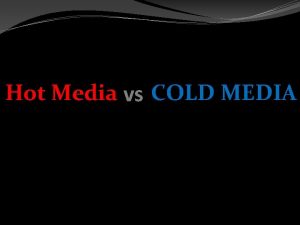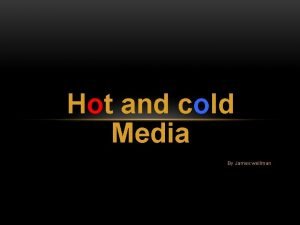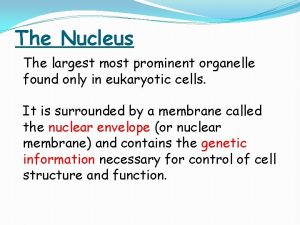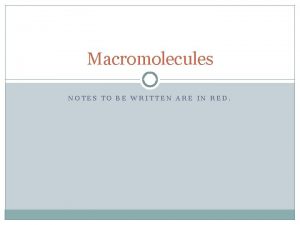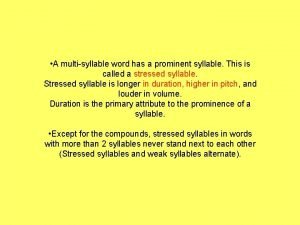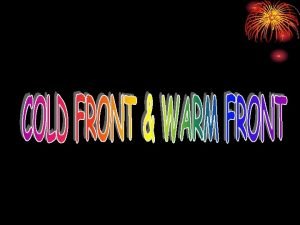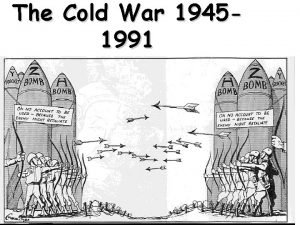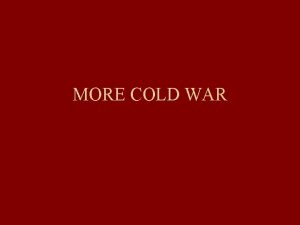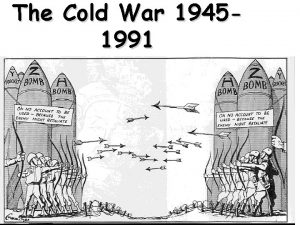Hot Media vs COLD MEDIA Hot Media Prominent













- Slides: 13

Hot Media vs COLD MEDIA

Hot Media �Prominent during Mechanical Age �Also referred to as “high definition” �Little interaction involved

Cold Media • Prominent during the Electric Age • Referred to as “low definition” • Audience must participate to complete information

Hot Media Loud Clear Overpowering High Definition Intense • “State of being filled with information” • A lot of information is given • Ex: Photograph, Alphabet, Film, Radio

Cold Media Shadowy Unclear LOW DEFINITION Soft Blurry • Very little information is given • Requires audience to participate to complete information • Ex: Cartoon, Speech, Television, Telephone

Hot Media Photograph • A photograph is clear and full of visual information and detail. As the saying goes, “A picture is worth a thousand words. ”

Cold Media Cartoon • Cartoons are low definition simply because they provide low visual information. The viewer must use their imagination to fill in the blanks.

Hot Media Alphabet • The alphabet, when printed on paper is hot because it gives all of the information without any participation or completion by the reader.

Cold Media Speech • Speech is a cool medium because the listener must participate greatly in order to fill in much of the information that is being given.

Hot Media Film • Film and theater overload the audience with intense audio and visual information; No participation from viewer. • Pay each time for prepared space. • High definition.

Cold Media Television • Television is small, unclear, and weak to the audio and visual senses; Not overpowering. • Do not need to pay every time to watch. • Low definition.

Hot Media Radio • Radio is high definition. • Informs listener without any need for participation; not open for debate or discussion. • High quality sound.

Cold Media Telephone • The telephone has low quality, minimal sound. • Requires completion of information by listener. • Low definition.
 Hot media cold media
Hot media cold media Hot media and cold media
Hot media and cold media Luhan hot
Luhan hot Hot
Hot The cold war lesson 1 the cold war begins
The cold war lesson 1 the cold war begins Most prominent organelle in eukaryotic cells
Most prominent organelle in eukaryotic cells Offering incentives for charitable acts essay
Offering incentives for charitable acts essay Disadvantages of consensus decision-making
Disadvantages of consensus decision-making For centuries prominent thinkers have pondered
For centuries prominent thinkers have pondered Islam vs. christianity venn diagram
Islam vs. christianity venn diagram What macromolecule is a prominent part of animal tissues
What macromolecule is a prominent part of animal tissues Abstract foreshadowing examples
Abstract foreshadowing examples Newsletter elements
Newsletter elements Syllable that is stressed
Syllable that is stressed

